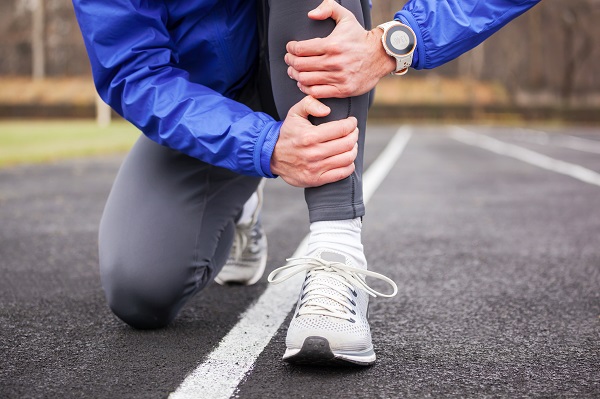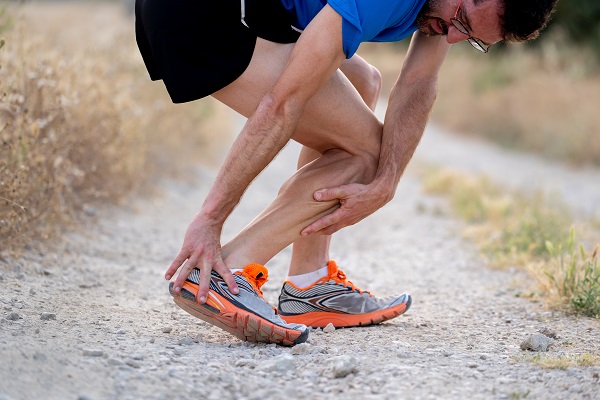September 25th, 2018

Running can be an excellent way to both exercise and relieve stress. Don’t let these common injuries stand in your way! Read on to learn why these injuries occur and what you should do to ensure the problems don’t get worse.
Stress Fracture
When you first started running, you were likely warned not to start too fast too soon. This advice applies to stress fractures, small cracks or bruising in your bone caused by dramatic changes in exercise frequency, duration, and intensity. This injury typically affects the bones in your shins and feet.
Stress fractures are distinguished by a dull pain that increases when you use the affected area. Don’t ignore this pain. If left untreated, this injury can worsen over time. Refrain from high-impact activities and give your bones the time they need to heal. To prevent stress fractures, start a new activity slowly and gradually increase your running time, speed, and distance.
Shin Splints
Shin splints, also known as medial tibial stress syndrome, are a common injury among runners with either flat feet or high arches. Caused by repetitive stress on the shinbone, this injury can affect beginner runners who don’t build their mileage gradually and seasoned athletes who suddenly change their exercise routine.
If you have shin splints, you’ll notice a dull pain or soreness along the inside lower part of your shin bone. To reduce the risk of shin splints, wear proper fitting running shoes and modify your technique. Many specialist running shops offer gait analysis and have experience recommending the correct shoes. Do not overextend the use of the shoes you run in. Depending on your distance, you should consider either alternating pairs, or replacing running shoes every 3 to 6 months.

Achilles Tendinitis
Achilles tendinitis or tendinopathy refers to inflammation of the Achilles tendon, which is the band of tissue that connects your calf muscles to the back of your heel; this can be caused by repetitive stress, improper footwear, and calf muscle tightness or weakness.
If you have Achilles tendinitis, you’ll notice pain or stiffness along your heel. Rest is critical for recovery, so make sure to stay off your feet or, at the least, keep as much pressure off of the affected foot as much as possible. You can also perform exercises to treat Achilles tendinitis. Initial treatment can include rest, activity modification, anti-inflamatories, orthotics and stretching exercises. If the tendinitis does not respond, then more formal therapies may be needed.
Runner’s Knee
Did you know that roughly 40% of all running injuries affect the knee? Aptly named, runner’s knee is caused by swelling, or inflammation, of the cartilage beneath your kneecap; this can be caused by large amounts of pressure on the knee, weak thighs, and a tendency to pronate your feet.
While this injury isn’t severe, you will notice it flaring up, particularly when walking up and down stairs or running long distances. Don’t ignore that pain! Again, listen to your body. To reduce the risk of runner’s knee in Atlanta, decrease the number of miles you run or even the amount of days you run in a week. It is better to take a day or two off now rather than weeks and weeks down the line!
Back






